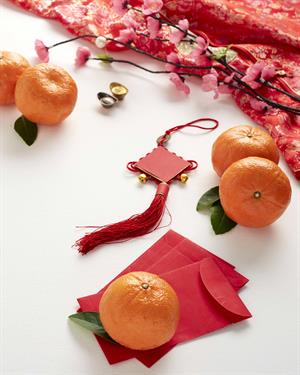In the United States, “Holiday Season” refers to the period from Thanksgiving to New Year’s Day. For some other countries and cultures, however, an important holiday is on the horizon. That holiday is the Lunar New Year, which is celebrated in many Asian countries as well as by people of Asian descent living in other nations. Betty Ong, Reference Librarian, graciously provided the following story on the Lunar New Year.
 The Lunar New Year* is one of the most celebrated festivals in the world. This holiday is also known as Chinese New Year or Spring Festival, which marks the end of winter and the beginning of spring. This celebration became a tradition starting with the Han Dynasty (206 BCE**-220 CE***), but has since been celebrated in both Asian and non-Asian countries.
The Lunar New Year* is one of the most celebrated festivals in the world. This holiday is also known as Chinese New Year or Spring Festival, which marks the end of winter and the beginning of spring. This celebration became a tradition starting with the Han Dynasty (206 BCE**-220 CE***), but has since been celebrated in both Asian and non-Asian countries.
The Lunar New Year is an important celebration because it is a time to build family solidarity by showing respect to ancestors, reuniting with family members, and celebrating the beginning of another prosperous new year.
The date of this festival is different each year as it is based on the lunisolar calendar as opposed to the Gregorian calendar****. Typically, the dates fall between January and February.
Each Chinese New Year is named in honor of one of the 12 Chinese symbolic creatures. The Chinese believe that their personality traits, as well as their physical and mental attributes, are reflected in the horoscope of each symbolic animal.
Lunar New Year falls on Feb. 12 this year and marks the Year of the Ox.
How Lunar New Year is celebrated
Lunar New Year is celebrated by family members returning to their hometowns for reunions with their elders, with a reunion dinner arranged to include eight or nine dishes, as those numbers are considered lucky.
 Myths and legends have a big influence on the festivities in terms of both bringing good luck for the new year and keeping evil spirits away. For example, homes are given a thorough spring cleaning and decorated with plum or peach blossoms and tangerines. Peaches are a sign of longevity and oranges are thought to attract wealth.
Myths and legends have a big influence on the festivities in terms of both bringing good luck for the new year and keeping evil spirits away. For example, homes are given a thorough spring cleaning and decorated with plum or peach blossoms and tangerines. Peaches are a sign of longevity and oranges are thought to attract wealth.
In addition, banners of short poems and positive greetings, such as good luck, longevity, happiness and wealth, are displayed around the home. Then red firecrackers are lit at midnight on New Year’s Eve to prevent evil spirits and bad luck from entering the home.
Also, everyone wears new clothes during the celebrations to symbolize a new beginning. Red is the color of choice, as it represents joy and prosperity. Red also is the color that keeps a mythical beast, Nian, from appearing. Children look forward to receiving red envelopes containing lucky money.

New Year’s celebrations end with the Lantern Festival, which marks the first full moon of the new year. This is when mythical creatures such as the phoenix and dragon appear and the famous lion and dragon dances are performed. Parades of lanterns guide wayward spirits home and the burning of incense sticks along with the faces and noise of the lions drive the monster beasts away.
Here some common phrases associated with the Lunar New Year:
Xin Nian Kwai Le – Happy New Year
Kung Hei Fat Choi - May you prosper in all your activities
*A lunar year is based on the 12 cycles of the moon and is approximately 354 days. This differs from a solar year, which is 365 days – the time it takes the Earth to complete one orbit of the sun.
**BCE stands for Before Common Era. It is the same as B.C.
***CE stands for Common Era. It is the same as A.D.
****In the Gregorian calendar, the new year starts on Jan. 1